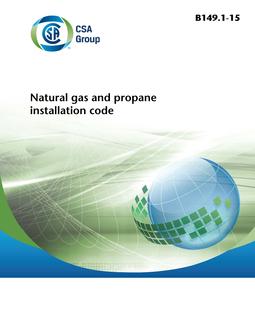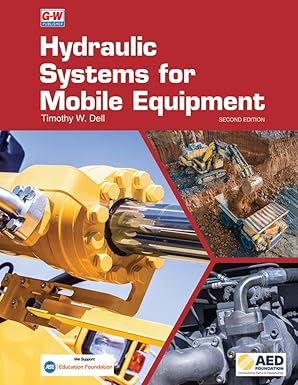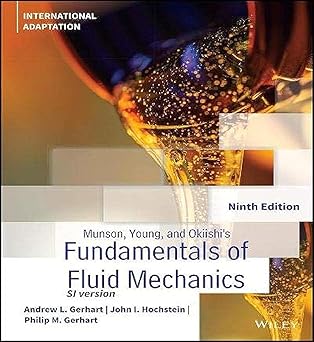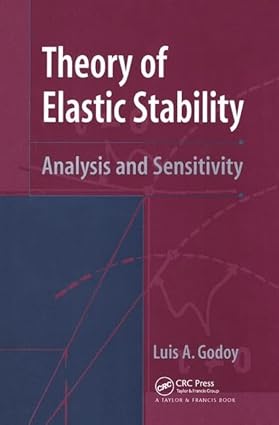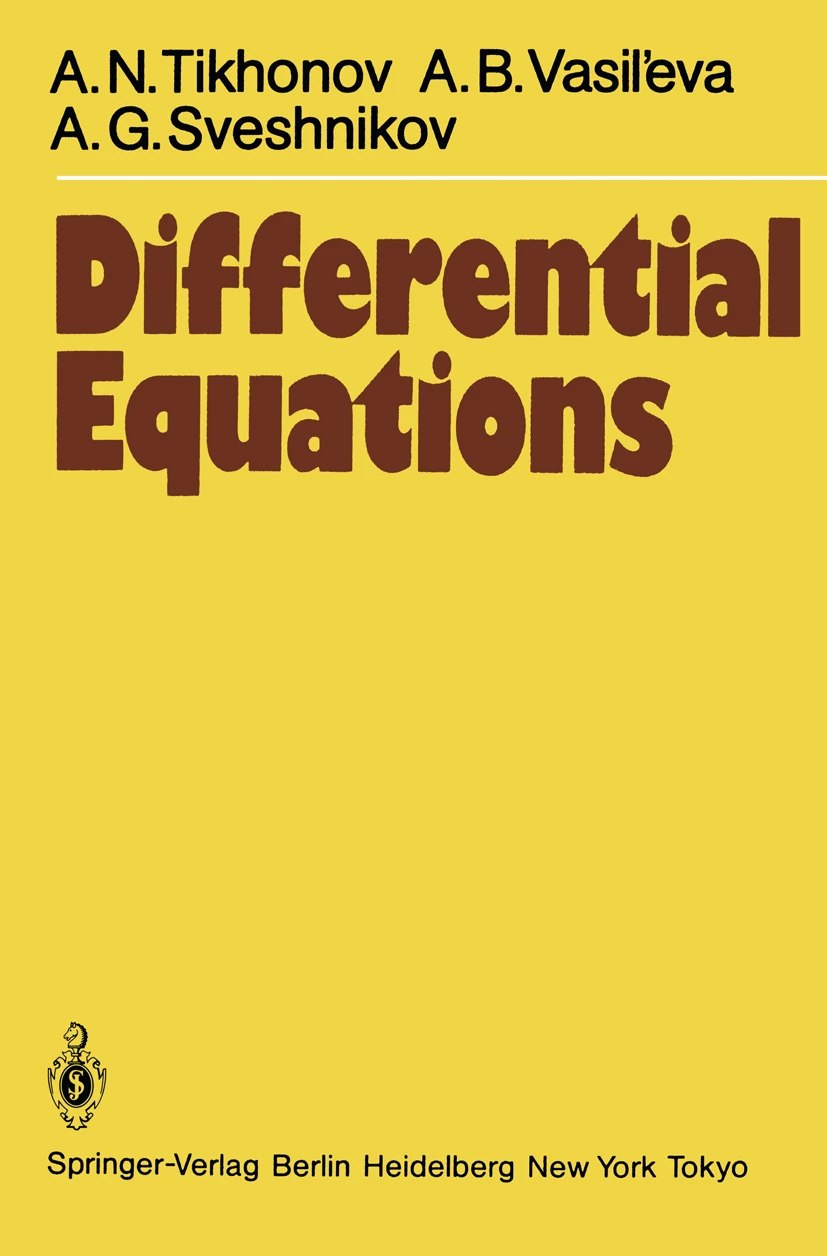Preface
This is the fifteenth edition of CSA B149.1, Natural gas and propane installation code. It supersedes the previous editions, published in 2010, 2005, and 2000 by the CSA Group (CSA) as CAN/CSA-B149.1, in 1995, 1991, 1986, 1980, 1978, 1976, and 1974 by the Canadian Gas Association (CGA), and in 1971, 1966, 1962, and 1958 by the CSA Group.
In 1958, the CSA Group published the first edition of CSA B149, Installation Code for Gas Burning Appliances and Equipment. It was superseded by later editions in 1962, 1966, and 1971. Following the publication of the 1966 edition, the decision was made to split the Code into two parts: B149.1, dealing with the installation of appliances and equipment burning natural gas, and B149.2, dealing with the installation of appliances and equipment burning propane. As a first step, B149.2 was prepared and first published in 1969.
The Canadian Gas Association was accredited by the Standards Council of Canada as the standards development organization responsible for preparing standards for gas- burning appliances and equipment, and in this connection took over responsibility for the B149 Code in 1974. New editions of the Code were subsequently published in 1974, 1976, 1978, 1980, 1986, 1991, and 1995.
On June 30, 1997, the CSA Group acquired International Approval Services (IAS), which was until then a joint venture of the American Gas Association (AGA) and the Canadian Gas Association. Under this agreement, CSA acquired the complete range of IAS standards administration, certification, and registration products and services for appliances and accessories fuelled by natural and liquefied petroleum gases. In 1998, the CSA B149 Installation Code Committee agreed to publish a Natural Gas and Propane Installation Code that would amalgamate the first seven sections of CAN/CGA-B149.1 and CAN/CGA-B149.2 to become CAN/CSA-B149.1-00. This amalgamation was in response to the trend among the authorities having jurisdiction of combining licensing and training for natural gas and propane. The remaining sections 8 to 14 of CAN/CGA-B149.2 became CAN/CSA-B149.2-00, Propane Storage and Handling Code.
In this 2015 edition, where a major change or addition to the previous edition of the Code has been made, the clause, table, or figure affected is identified by the symbol delta in the margin. Users of the Code are advised that the change markers in the text are not intended to be all-inclusive and are provided as a convenience only; such markers cannot constitute a comprehensive guide to the revisions made to the Code. Care must therefore be taken not to rely on the change markers to determine the current requirements of the Code. As always, users of the Code must consider the entire Code and any local amendments.
The CSA B149.1 Code Committee, which is responsible for preparing this Code, consists of members of the provincial gas inspection authorities, natural gas utilities, propane distributors, appliance, equipment, and accessory manufacturers, certification organizations, and representatives from the Heating, Refrigeration and Air Conditioning Institute of Canada, the Mechanical Contractors Association of Canada and federal government departments. This Code has been formally approved by the CSA B149.1 Technical Committee for the Natural Gas and Propane Installation Code and by the Interprovincial Gas Advisory Council.
Scope
1.1
This Code applies to the installation of
(a) appliances, equipment, components, and accessories where gas is to be used for fuel purposes;
(b) piping and tubing systems extending from the termination of the utility installation or from the distributor's propane tank;
(c) vehicle-refuelling appliances and associated equipment meeting the requirements of a general-purpose appliance to fill a natural-gas-fuelled vehicle; and
(d) stationary gas engines and turbines.
1.2
This Code does not apply to
(a) marine or pipeline terminals;
(b) gas where used as a feedstock in petroleum refineries or chemical plants;
(c) utility pipeline distribution and transmission pipelines;
(d) storage and handling of liquefied natural gas or underground reservoirs for natural gas;
(e) the installation of NGV fuel systems, containers, and refueling stations;
(f) the storage and utilization of compressed natural gas on boats;
(g) the installation of vehicle-refuelling appliances when NGV storage containers are installed as part of the system;
(h) refrigerated storage or underground reservoirs for propane;
(i) propane used on boats;
(j) propane used as a propellant in aerosol containers;
(k) butane fuel cylinders of 150 g capacity or less; and
(l) the installation of containers and equipment to be used for propane in distribution locations and filling plants and on tank trucks, tank trailers, and cargo liners.
1.3
Where the term "gas" is used, the requirements of this Code include, and apply equally to, any of the following gases or mixtures of them: natural gas, manufactured gas, or mixtures of propane gas and air, propane, propylene, butanes (normal butane or isobutane), and butylenes.
1.4
This Code and any Standards referenced in it do not make or imply any assurance or guarantee with respect to the life expectancy, durability, or operating performance of equipment and materials referenced in the Code.
1.5
The values given in yard/pound units are the standard. This Code contains SI (metric) equivalents to yard/pound units so that the Code can be used in SI (metric) units. SI (metric) equivalents may be approximate.
1.6
In this Code, unless approved otherwise by the authority having jurisdiction, "shall" indicates a mandatory requirement; "should" indicates a recommendation or that which is advised but not mandatory; and "may" indicates an advisory or optional statement. Notes to the text do not include mandatory or alternative requirements. The purpose of a note is to separate from the text explanatory or informative material that is not properly a part of this Code. Notes to figures and tables, however, are considered part of the figure or table and may be written as mandatory requirements.
چکیده فارسی
پیشگفتار
این پانزدهمین ویرایش CSA B149.1، کد نصب گاز طبیعی و پروپان است. این نسخه جایگزین نسخههای قبلی منتشر شده در سالهای 2010، 2005 و 2000 توسط گروه CSA (CSA) با عنوان CAN/CSA-B149.1، در سالهای 1995، 1991، 1986، 1980، 1978، 1976 و 1974 توسط انجمن Canadians میشود. (CGA)، و در سال های 1971، 1966، 1962 و 1958 توسط گروه CSA.
در سال 1958، گروه CSA اولین نسخه CSA B149، کد نصب وسایل و تجهیزات گازسوز را منتشر کرد. در سالهای 1962، 1966 و 1971 نسخههای بعدی آن جایگزین شد. پس از انتشار نسخه 1966، تصمیم به تقسیم کد به دو بخش شد: B149.1، مربوط به نصب وسایل و تجهیزات سوزاندن گاز طبیعی، و B149.2، مربوط به نصب وسایل و تجهیزات سوزاندن پروپان. به عنوان اولین قدم، B149.2 تهیه و برای اولین بار در سال 1969 منتشر شد.
انجمن گاز کانادا توسط شورای استاندارد کانادا به عنوان سازمان توسعه استاندارد که مسئول تهیه استانداردها برای وسایل و تجهیزات گازسوز است، مورد تایید قرار گرفت و در این رابطه مسئولیت کد B149 را در سال 1974 بر عهده گرفت. متعاقباً ویرایش های جدید این کد منتشر شد. منتشر شده در سال های 1974، 1976، 1978، 1980، 1986، 1991 و 1995.
در 30 ژوئن 1997، گروه CSA خدمات تایید بین المللی (IAS) را خریداری کرد که تا آن زمان سرمایه گذاری مشترک انجمن گاز آمریکا (AGA) و انجمن گاز کانادا بود. بر اساس این قرارداد، CSA طیف کاملی از استانداردهای اداره، صدور گواهینامه، و ثبت محصولات و خدمات IAS را برای لوازم و لوازم جانبی که سوخت آنها با گازهای نفتی طبیعی و مایع است، به دست آورد. در سال 1998، کمیته کد نصب CSA B149 با انتشار یک کد نصب گاز طبیعی و پروپان موافقت کرد که هفت بخش اول CAN/CGA-B149.1 و CAN/CGA-B149.2 را با هم ترکیب میکرد تا تبدیل به CAN/CSA-B149 شود. 1-00. این ادغام در واکنش به روند بین مقامات دارای صلاحیت ترکیب مجوز و آموزش گاز طبیعی و پروپان بود. بخشهای 8 تا 14 باقیمانده از CAN/CGA-B149.2 به CAN/CSA-B149.2-00، کد ذخیرهسازی و مدیریت پروپان تبدیل شدند.
در این نسخه 2015، جایی که تغییر یا افزوده عمده ای به نسخه قبلی کد ایجاد شده است، بند، جدول یا شکل تحت تأثیر با نماد دلتا در حاشیه مشخص می شود. به کاربران این کد توصیه میشود که نشانگرهای تغییر در متن، همه چیز را شامل نمیشوند و صرفاً برای راحتی ارائه میشوند. چنین نشانگرهایی نمی توانند راهنمای جامعی برای اصلاحات انجام شده در کد باشند. بنابراین باید مراقب بود که برای تعیین الزامات فعلی کد به نشانگرهای تغییر تکیه نکنید. مثل همیشه، کاربران کد باید کل کد و هرگونه اصلاحات محلی را در نظر بگیرند.
کمیته کد CSA B149.1 که مسئولیت تهیه این کد را بر عهده دارد، متشکل از اعضای مقامات بازرسی گاز استان، شرکتهای گاز طبیعی، توزیعکنندگان پروپان، سازندگان لوازم، تجهیزات و لوازم جانبی، سازمانهای صدور گواهینامه، و نمایندگان گرمایش، موسسه تبرید و تهویه مطبوع کانادا، انجمن پیمانکاران مکانیکی کانادا و ادارات دولت فدرال. این کد به طور رسمی توسط کمیته فنی CSA B149.1 برای کد نصب گاز طبیعی و پروپان و توسط شورای مشورتی گاز بین استانی تأیید شده است.
محدوده
1.1
این کد برای نصب
اعمال میشود
(الف) وسایل، تجهیزات، اجزاء و لوازم جانبی که در آنها گاز برای مقاصد سوخت استفاده می شود.
(ب) سیستمهای لولهکشی و لولهکشی که از انتهای تاسیسات برق یا مخزن پروپان توزیعکننده گسترش مییابند.
ج) وسایل سوختگیری خودرو و تجهیزات مربوطه که الزامات یک دستگاه همه منظوره را برای پرکردن خودروی گاز طبیعی برآورده میکنند. و
(د) موتورهای گاز ثابت و توربین ها.
1.2
این کد برای
اعمال نمیشود
(الف) پایانه های دریایی یا خط لوله؛
ب) گازی که به عنوان ماده اولیه در پالایشگاه های نفت یا کارخانه های شیمیایی استفاده می شود.
(ج) خطوط لوله توزیع و انتقال آب و برق؛
(د) ذخیره و جابجایی گاز طبیعی مایع یا مخازن زیرزمینی گاز طبیعی.
(ه) نصب سیستمهای سوخت NGV، کانتینرها و ایستگاههای سوختگیری.
(و) ذخیره و استفاده از گاز طبیعی فشرده در قایق ها.
(ز) نصب وسایل سوخترسانی خودرو زمانی که ظروف ذخیرهسازی NGV به عنوان بخشی از سیستم نصب میشوند.
(ح) ذخیره سازی یخچال یا مخازن زیرزمینی برای پروپان.
(i) پروپان مورد استفاده در قایق.
ی) پروپان که به عنوان پیشران در ظروف آئروسل استفاده می شود.
ک) سیلندرهای سوخت بوتان با ظرفیت 150 گرم یا کمتر. و
(ل) نصب کانتینرها و تجهیزات مورد استفاده برای پروپان در مکان های توزیع و کارخانه های پر کردن و بر روی کامیون های مخزن، تریلرهای مخزن، و بوش های بار.
1.3
در مواردی که از اصطلاح "گاز" استفاده می شود، الزامات این آیین نامه شامل هر یک از گازها یا مخلوط های زیر است و به طور یکسان در مورد آنها اعمال می شود: گاز طبیعی، گاز تولیدی، یا مخلوط گاز پروپان و هوا، پروپان، پروپیلن، بوتان ها. (بوتان معمولی یا ایزوبوتان)، و بوتیلن ها.
1.4
این کد و استانداردهای ذکر شده در آن هیچ گونه اطمینان یا تضمینی را در رابطه با طول عمر، دوام، یا عملکرد عملیاتی تجهیزات و مواد ذکر شده در این کد ایجاد نمی کند.
1.5
مقادیر داده شده در واحد یارد/پوند استاندارد هستند. این کد شامل SI (متریک) معادل واحدهای یارد/پوند است تا بتوان از کد در واحدهای SI (متریک) استفاده کرد. معادلهای SI (متریک) ممکن است تقریبی باشند.
1.6
در این آیین نامه، مگر اینکه توسط مقامی که صلاحیت دارد تصویب شود، «باید» یک الزام اجباری را نشان دهد. «باید» به توصیه یا توصیهای اشاره دارد اما اجباری نیست. و «ممکن است» بیانگر یک بیانیه مشورتی یا اختیاری است. یادداشت های متن شامل الزامات اجباری یا جایگزین نمی شود. هدف یادداشت جدا کردن مطالب توضیحی یا آموزنده از متن است که به درستی بخشی از این کد نیست. با این حال، یادداشت های شکل ها و جداول بخشی از شکل یا جدول در نظر گرفته می شوند و ممکن است به عنوان الزامات اجباری نوشته شوند.
ادامه ...
بستن ...
